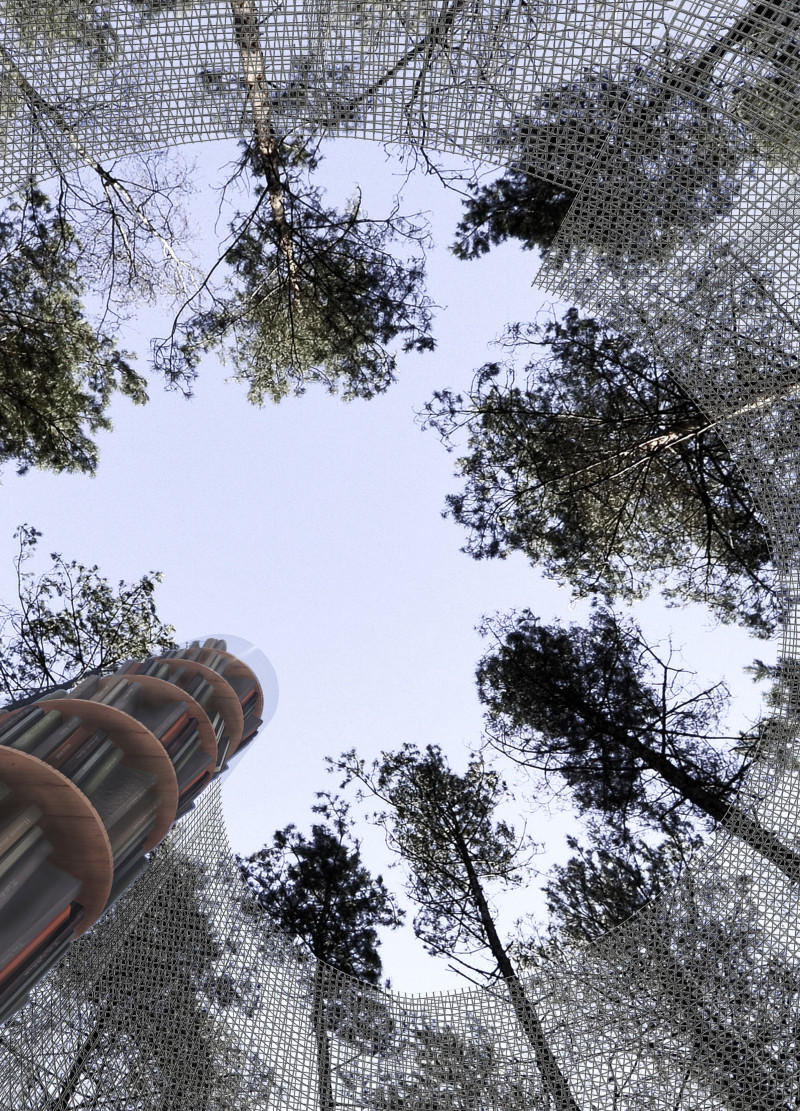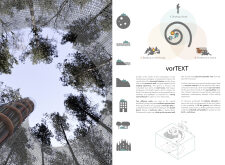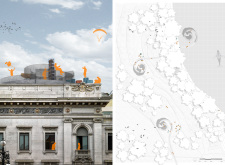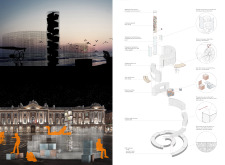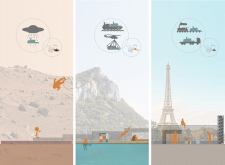5 key facts about this project
VorText presents an architectural vision that integrates communal reading spaces with natural surroundings. The design brings together the ideas of a fireplace and a protective wall, emphasizing a space meant for connection and reflection. The arrangement features a series of steel boxes that enclose a bright, transparent hearth filled with books, allowing for a unique interaction among users and the landscape.
Design Concept
The layout consists of two main paths that lead to a central bookshelf, offering multiple ways for people to engage with the space. Users can park their bicycles in a sheltered area on the ground floor and then choose to read on shared benches, multifunctional cubes, or even on reclined surfaces. Another option is to climb the terraced wall, allowing visitors to enjoy elevated views while selecting their reading material.
Sustainability and Structure
Central to VorText is its commitment to sustainability. The design utilizes gabion walls that reduce the need for excavation, which highlights its environmental focus. These walls are permeable, allowing for a connection with the surrounding landscape. This creates a more inviting atmosphere and opens up sightlines. The structure is based on modular elements, which can be easily assembled and relocated, making it suitable for different settings.
Material Integration
VorText features key materials such as steel for the construction of the boxes and larch wood used in the bookshelf and seating arrangements. This choice of materials balances durability with an inviting look that complements the natural environment. The elements work together to create a space that encourages interaction and enjoyment of reading.
At the center of VorText, the transparent hearth serves as a focal point, drawing attention to the world of books within. It creates a warm, welcoming atmosphere, reinforcing the importance of reading in a communal setting. This design detail enhances the overall experience, highlighting the joy of literature in a shared space.


